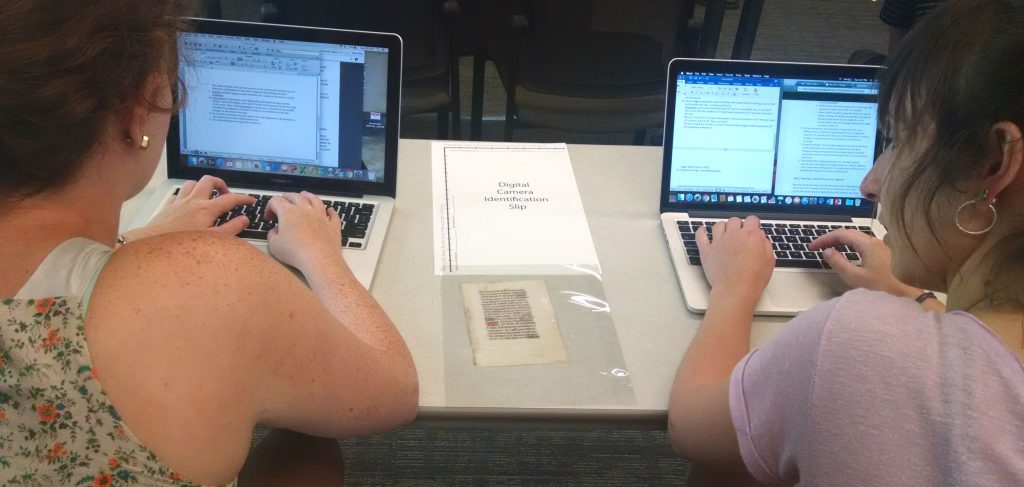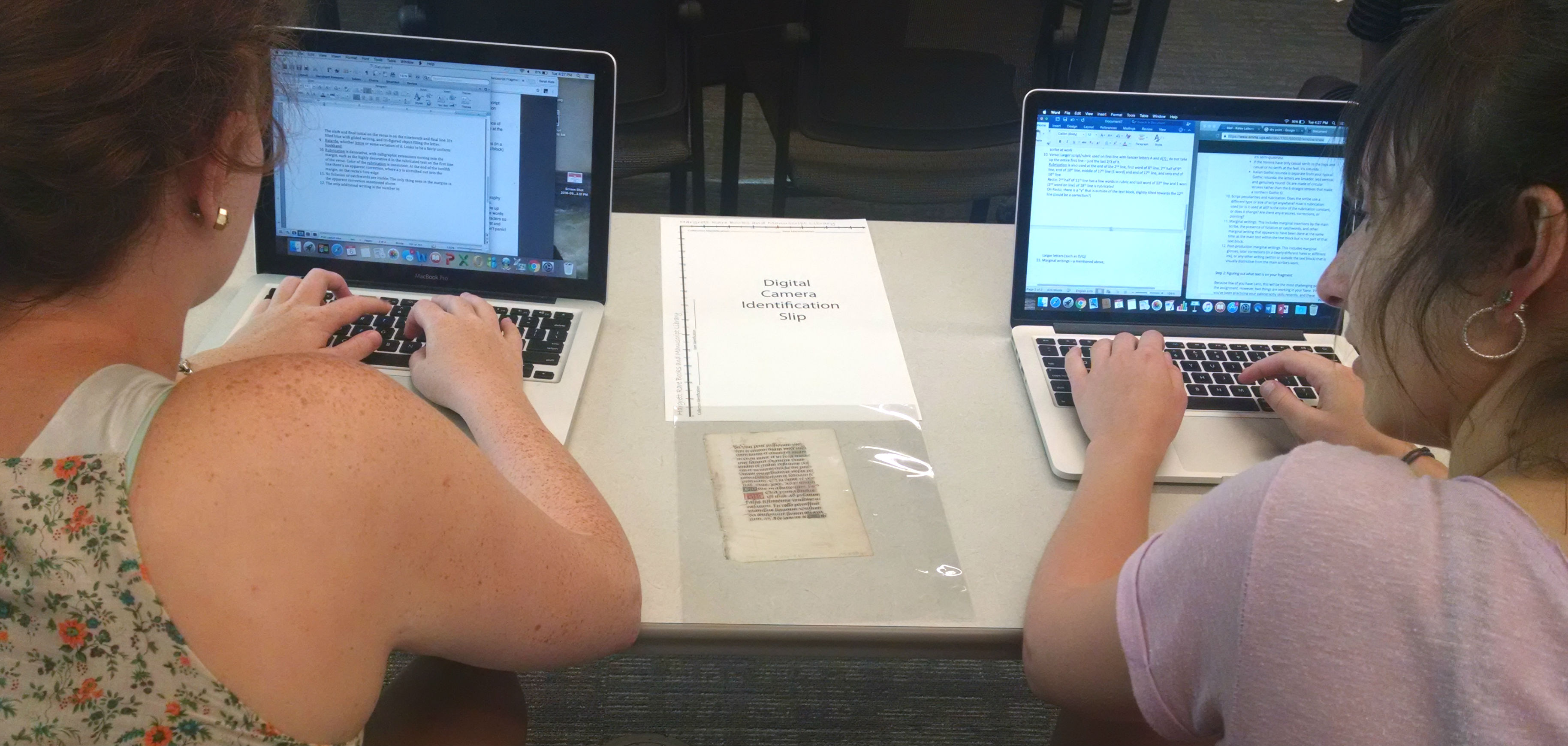
The fragment description/practicum assignment that I ran last week was, it seems, a success. Certainly, judging from the students’ experience in class on Thursday especially (when most of them tackled the often-frustrating task of trying to figure out what text their fragment contained), the assignment stretched them — but they also all completed it successfully and efficiently. A special shout-out goes to my Latinist in the class (you know who you are!) for stepping in and helping her peers decipher minims and produce accurate-enough transcriptions for a Google search to be fruitful. I saw collaboration, patience, intellectual suppleness, creative researching, and even stubbornness — every trait you need to ask profitable questions of a manuscript.
A note on the “stubbornness” quality: typically when we do this assignment, I am run off my feet answering questions and helping decipher tricky abbreviations. This time, I actually had time to stand around and chat with the librarians (mirabile dictu!) while the students fought bravely with their Latin. That kind of initiative and gumption is going to pay off big time, and not just in this class.
This class did raise one set of problems that I hadn’t run into before with the assignment. During the text-identification part of the process, many groups discovered, much to their surprise and frustration, that the text on their fragment (usually of a Book of Hours) did not match identically the text they discovered online, a fact that discomfited them. (Did they have the right text? What is going on here? Somehow, students in past cohorts had never made it that deeply into their text-matching process.) Although it is not an editing assignment AT ALL — something I had to repeat to several groups — they had accidentally stumbled into a truism of medieval texts: there ain’t no such thing as a stable text. So watch this space for more on mouvance and bricolage in Books of Hours — a turn I hadn’t expected when I designed the course, but which is where the material is taking us.
I will let one of my students have the last word on the assignment:
In summary, I left this week’s final class meeting with two main takeaways. First, despite any amount of studying and reading, the most effective way to learn is to be stretched and learn is to apply the information. The information that we learned before last week’s mini-exam was essential to examining manuscripts in class today. However, leading to my second takeaway, a thorough knowledge of the readings and images covered was not alone enough to complete the practicum well. Much against the way students are often expected to think in school, you can’t simply study well to perform well in this type of exercise. There is no magic formula, and (much against the way I like to think) there is often not a single correct answer to the questions that we must ask of the manuscripts. Collaboration, creativity, and patience are essential in this process. You must be willing to start over and look at things from a new perspective.
